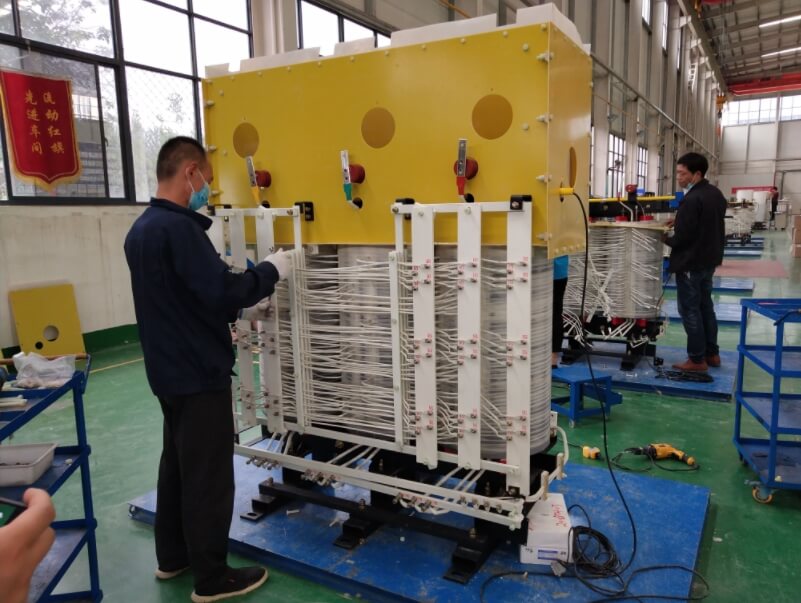-
-

transformer repair
Transformer repair involves diagnosing and fixing issues that may arise in transformers, which are critical components in electrical power systems. Here are general steps and considerations for transformer repair:
- Diagnosis and Inspection:
- Identify the symptoms of the transformer issue, such as abnormal noises, overheating, or voltage fluctuations.
- Perform a visual inspection to check for signs of damage, leaks, or other visible issues.
- Use diagnostic tools, including thermal imaging, oil testing, and electrical testing, to assess the transformer’s condition.
- Oil Analysis:
- For oil-filled transformers, perform oil analysis to assess the condition of the insulating oil. This can provide insights into the presence of contaminants, moisture, and the overall health of the transformer.
- Repair or Replacement of Components:
- Address specific issues by repairing or replacing damaged components such as bushings, tap changers, insulating material, or cooling systems.
- Ensure that replacements match the specifications and standards of the original components.
- Winding Repair:
- Repair damaged windings, which may involve re-insulating or replacing sections of the winding. In some cases, complete rewinding may be necessary.
- Cooling System Maintenance:
- Check and repair the cooling system, ensuring that fans, radiators, or other cooling mechanisms are functioning properly. Overheating can lead to transformer failure.
- Tap Changer Maintenance:
- Inspect and maintain tap changers, ensuring they operate smoothly. Clean or replace contacts if needed.
- Leak Repairs:
- Address any oil leaks promptly, as leaks can lead to insulation degradation and pose environmental risks.
- Safety Measures:
- Adhere to safety protocols during repairs. Isolate the transformer from the power source, discharge stored energy, and implement proper safety measures for personnel involved in the repair.
- Testing:
- Conduct comprehensive tests after repairs to verify the transformer’s functionality. This may include insulation resistance tests, turns ratio tests, and other electrical measurements.
- Documentation:
- Maintain detailed records of the repairs performed, including any replacements, adjustments, or modifications made to the transformer.
- Professional Assistance:
- In many cases, transformer repairs should be carried out by qualified professionals with expertise in electrical systems and transformers. Seek assistance from specialized transformer service companies or engineers.
It’s important to note that transformer repair procedures can vary based on the type of transformer, the nature of the issue, and the specific design considerations. Always refer to the manufacturer’s guidelines and consult with experienced professionals when necessary. Regular maintenance and timely repairs contribute to the longevity and reliability of transformers in electrical systems.
- Diagnosis and Inspection:
-
What are the methods for transformer repair and maintenance?
Abstract:
transformer repair Transformer repair involves diagnosing and fixing issues that may arise in transformers, which are critical components in electrical power systems. Here are general steps and considerations for transformer repair: Diagnosis and Inspection: Identify the symptoms of the transformer issue, such as abnormal noises, overheating, or voltage fluctuations. Perform a visual inspection to check … Continue reading What are the methods for transformer repair and maintenance?
Original Source:
https://www.ztelecwire.com/what-are-the-methods-for-transformer-repair-and-maintenance.html
Customer Comments:
Leave a Message:
Your email address will not be published. Required fields are marked*

Tags:
Enameled Wire Copper wire Aluminum wire Enamelled wire Aluminum Winding Wire Magnet wire Modified polyester Round copper wire Heat resistance Enameled aluminum wire